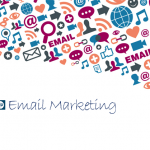Email Marketing are one of the best ways to communicate with clients. They are quicker than postal mail, more efficient, serve many purposes, and completely free to send. Did you know that emails can even be used for marketing? With the simple click of a mouse, an email can be used as a marketing tool. In the following article, you will learn how to use emails for that specific purpose.
You want your email to be as personal as you possibly can. Like any other kind of marketing, treating your customers as individuals can make them more likely to respond positively to your message. For instance, if you have an idea of why they wanted your emails, put that in your message to them.
While online promotion is essential, don’t overlook the opportunity to promote your mailing list offline. To build both new subscribers and potential clients, look for any opportunity possible to get the word out. Some great opportunities to build your business can be found at networking events, trade shows, conferences and local gatherings.
Provide subscribers with a way out.
Place an “unsubscribe” link in your emails or on your website to allow them to remove themselves from your list. You should also set up your list to cull itself by removing subscribers after a particular number of messages prompt no response or action from the recipient. This prevents your emails from becoming annoying to disinterested subscribers and preserves your image.
Do not use dollar signs in either the subject or the body of your emails, unless you are using just one to denote a specific amount of currency. This will strike many recipients as being spam my behavior, and many spam filters will automatically trash emails that include character strings like “$$$.”
Use colors and fonts that reflect your business and are easy to view. Even if the content is interesting, difficult to read fonts and harsh colors can cause some customers to reject the email, and possibly future ones as well. Use the same color scheme and fonts for all of your emails.
 Have a strong call to action in your email marketing campaign and position it to be seen.
Have a strong call to action in your email marketing campaign and position it to be seen.
You shouldn’t make it difficult for your email readers to know exactly what you want from them. If it’s too hard to figure out, then your email will most likely be quickly deleted. Instead, offer a clear call to action and deliver it in a way that can’t be missed.
Your emails should be readable sans images. Many email providers disable images by default, and unless the user changes their settings, they will not be able to see any images you include. Because of this, any images you include in the emails that you send should also be followed by comprehensive text.
Keep your list up to date
Automatically unsubscribe customers who don’t respond to your marketing materials after a certain number of emails. If your customers aren’t responding to your emails anymore, they most likely have lost interest in your newsletter but aren’t annoyed enough by it yet to unsubscribe. By unsubscribing them, you avoid generating bad feelings that could hurt your business.
Set up some expectations for your recipients when they sign up for your email campaign. Once they sign up, they should receive an immediate confirmation email that highlights what they can receive from signing up. This can help you build great customers relationships and help you avoid complaints from the recipients not being aware of what they were receiving.
When following up with customers, try following up with a sale schedule. Include a link in order for them to view this schedule. The end of the email could inform them that they can get all the specifics on this sale schedule by clicking on the link that was provided to them.
Write an interesting introduction in your Email Marketing
Research shows that there are three emails that are the most important. The first offers an introduction and invitation to sign up and give permission to receive further communication. The second presents the customer with specific expectations such as coupons, discount offers or newsletters. The third email would deliver those expectations in the form of the discounts and other incentives.
Make your emails concise. No one wants to read through a number of paragraphs when several would have sufficed. People don’t have much time these days, and you could become persona non grata in their email boxes if you don’t appreciate the time crunch that most people have to deal with these days.
In conclusion, emails are a great communication tool. There are many advantages to using emails, such as speed, efficiency, and cost. In addition to a communication tool, emails can me used as a marketing tool as well. All you have to do is remember the information from above and you can use emails for marketing.





